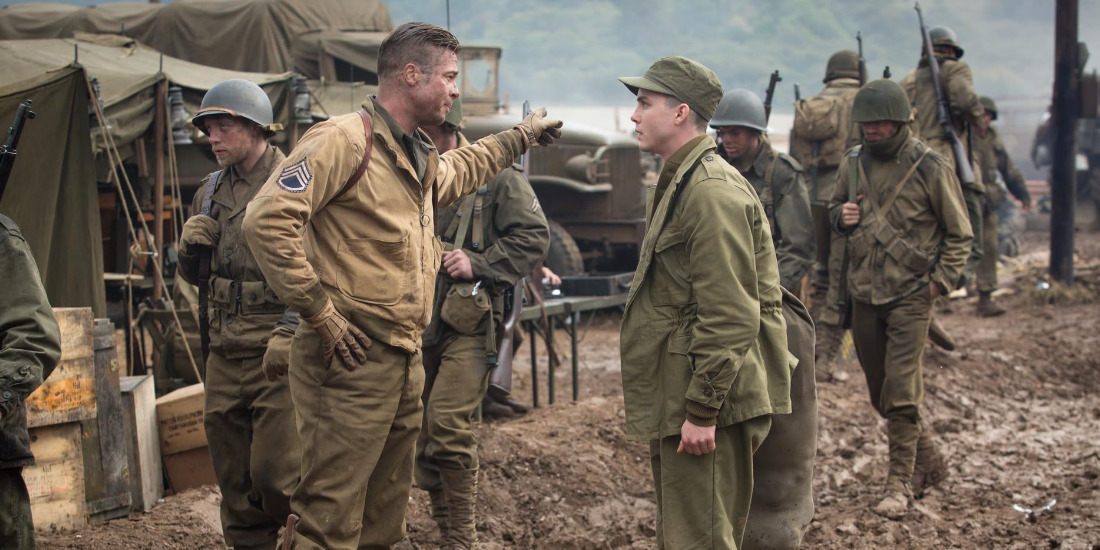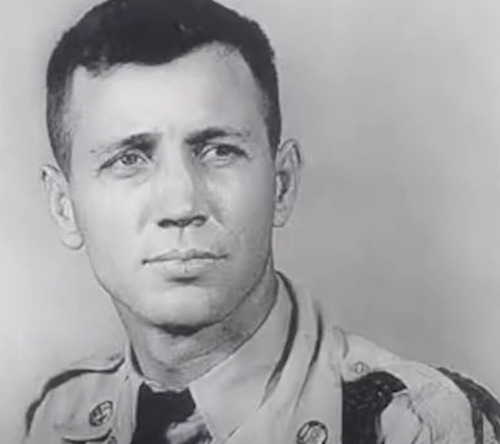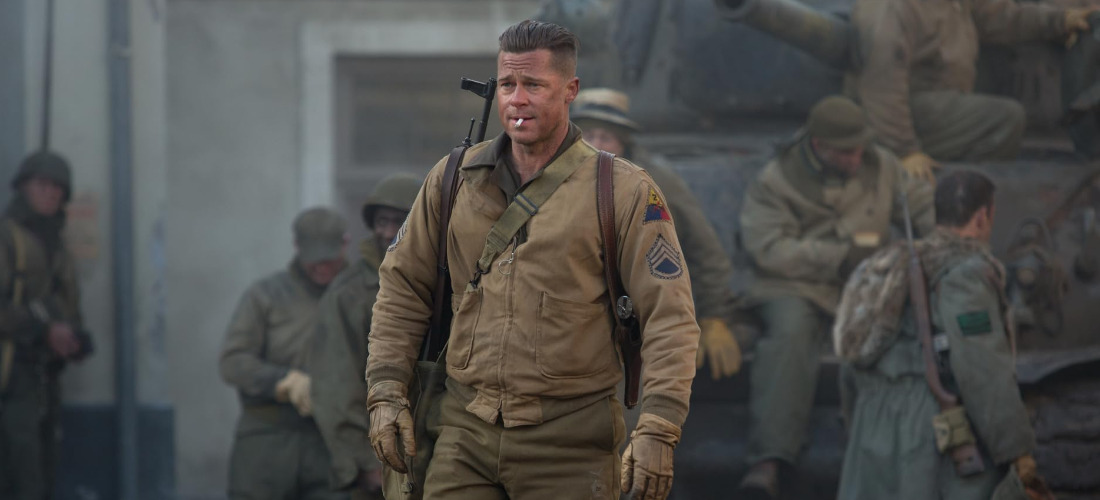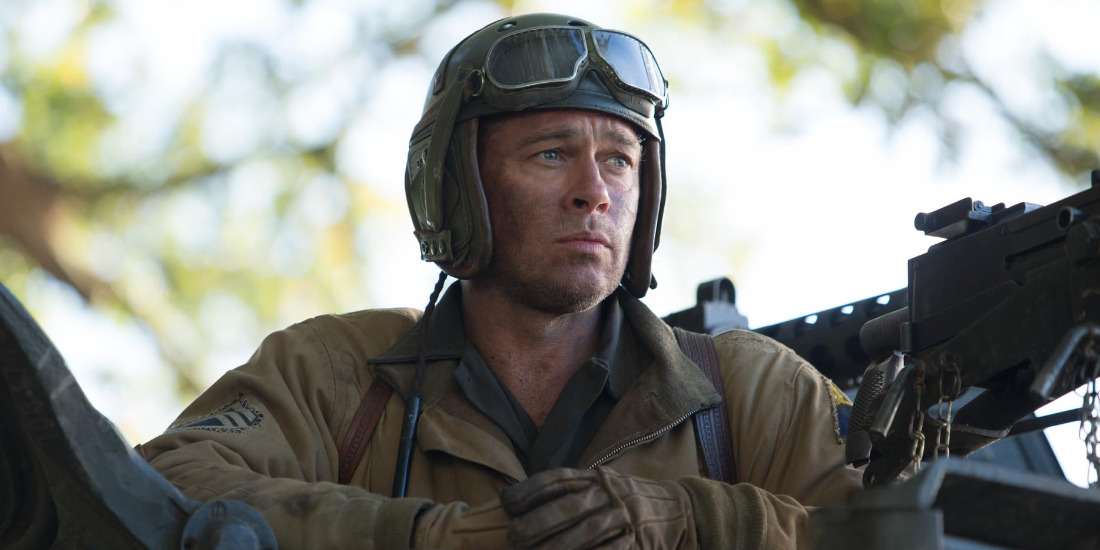‘Fury’ is a war drama film revolving around a U. S. Second Armored Division medium tank led by a battle-hardened Sargeant, Don Collier, whose goals encapsulate killing Nazis and protecting his crew and fellow countrymen. However, after Norman Ellison, a fresh-faced soldier, arrives in the middle of enemy territory to join Collier’s team, the man finds himself taking on the role of an unyielding mentor. Through their missions, Collier tries to turn the young man into a merciless soldier through whatever means necessary before the war’s brutal horrors do something much worse.
The film follows Don “Wardaddy” Collier and his crew after Norman’s arrival. In the course of a few days, the crew, synonymous on the battlefields with their Sherman tank nicknamed “Fury,” undergo several of war’s brutalities until they arrive at a fight or flight scenario that becomes their salvation and reckoning. Given the intense nature of this crew’s World War II story, set in 1945, viewers must be wondering if protagonist Collier/Wardaddy holds any roots in actual history. SPOILERS AHEAD!
Lafayette G. Pool: The Real-Life “Wardaddy”
Although Brad Pitt’s character in ‘Fury,’ Don “Wardaddy” Collier, is fictitious, he partially harvests some inspiration from a real-life historical figure who fought in World War II as a tank commander. Even though the film’s creator, Director/Writer David Ayer, seldom talks about the parallels between Don Collier and the real-life Lafayette G. Pool, the similarities between the two persist, drawing a clear connection.
 Born in 1919, Pool joined the American Army at 22 in 1941 and received assignment to the 3rd Armored Division. In two years, the man saw a promotion to Staff Sargeant. He also reportedly turned down the opportunity to become an Officer, preferring his current station that kept him on the battlefield. Like Pitt’s character, Pool earned the nickname “Wardaddy” and commanded a reliable crew aboard his Sherman tank, which he had monikered “In The Mood.” Over the course of his military career, the commander went through three tanks, all of which bore the same name, signifying an emotional connection.
Born in 1919, Pool joined the American Army at 22 in 1941 and received assignment to the 3rd Armored Division. In two years, the man saw a promotion to Staff Sargeant. He also reportedly turned down the opportunity to become an Officer, preferring his current station that kept him on the battlefield. Like Pitt’s character, Pool earned the nickname “Wardaddy” and commanded a reliable crew aboard his Sherman tank, which he had monikered “In The Mood.” Over the course of his military career, the commander went through three tanks, all of which bore the same name, signifying an emotional connection.
Yet, since ‘Fury’ is a fictional story with plotlines holding no connection to reality— outside of the inevitable reality of being a historical war film— Pool’s career path doesn’t share many similarities to Collier’s on-screen ventures. For one, the central conflict that Collier’s narrative boils down to— a half-broken American tank confronting an entire SS Battalion— has no relation to Pool.

Pool remained one of the most skilled in his field, often called the “ace of tankers,” with a reported record of 258 destroyed enemy vehicles. The man also received a Distinguished Service Cross for his military service, alongside a number of other accolades. Nonetheless, unlike the on-screen Wardaddy, the circumstances surrounding Pool’s departure from the military remained different.
An injured leg following an enemy attack from the Germans marked the end of Pool’s on-field military career as a soldier and a tanker, though he still dabbled in other facets of the Army. Thus, once the war ended, the man went on to live a civilian life. Consequently, while there are some evident similarities between Collier and Pool, the two also share their clear distinctions. For the same reason, it’s fair to conclude that while Pool was likely a source of inspiration for Don “Wardaddy” Collier, the latter isn’t a faithful adaptation of him.
Brad Pitt’s Rendition of His “Wardaddy” Character
With the assessment that Collier retains enough individuality to depart him from the real-life Wardaddy in some aspects, his character’s roots, in reality, hold a second facet that emerges in spite of his fictionality. For the most part, when Ayer set out to create ‘Fury,’ he had clear visions, inspirations, and intentions with his characters and their narratives.

Ayer spoke with ScreenRant about the film’s World War II setting and his inclination toward it and said, “For me, it was both my grandparents fought in the war, my uncle and stuff. And I was in the Navy. So, it was always kind of personal to me. There was always like a family piece to it.”
Furthermore, the filmmaker spoke about war’s moral ambiguity— a theme that the film explores, and continued, “The more I learned about it, it’s always shown as this very sort of black and white, morally righteous event, and it was. I mean, it was good versus evil. But for the guys fighting in the trenches, I mean, it was brutal. It was just murky. That’s what I wanted to show—that the outcome was wildly positive— but there was this still this incredible price the guys paid, the soldiers paid. That price has resonated through families ever since.”
Adding to the same sentiment, Actor Brad Pitt also discussed his character in a conversation at a festival and said, “It [‘Fury’] was not a film about sides. For me, it was a film about that cumulative psychic trauma that every soldier carries to some extent.” He further added, “This film is about the soldiers’ exhaustion from the cold, hunger, and the cumulative effect on a daily basis. I hope the soldiers will walk away from this and feel they are recognized.” Thus, even outside Collier’s loose inspiration from Lafayette G. Pool, his character holds other ties to real life.
Read More: Is Logan Lerman’s Norman Based on a Real World War II Soldier?


You must be logged in to post a comment.